Putter Reviews
The Big Review – Yes! Golf Donna Putter
 Winners of two majors and countless US and European PGA titles, Yes! Golf putters are a common sight in the bags of both professionals and amateurs.
Winners of two majors and countless US and European PGA titles, Yes! Golf putters are a common sight in the bags of both professionals and amateurs.
As well as being one of the acknowledged inventors of grooved faces on putters, Yes! were also one of the first putter manufacturers to make heavier putters available to retail. A grooved face on a putter stops the ball skidding and bouncing in the first few feet after impact, a common cause of misses even on for putts that are struck on line, while the heavier head promotes a smoother and more consistent putting stroke.
Yes! Golf’s proprietary C-grooves get the ball rolling faster by simultaneously lifting the ball out of its resting place and imparting top spin. Normally a putter would need 4 or more degrees of loft to lift the ball out of the dent that it makes on the green and this loft produces a small but significant amount of backspin. While this sounds a little implausible, you need to understand that when a stationary golf ball is hit, it takes a little distance before it is rolling across the surface of the green. During this time, the ball will catch any imperfections on the green and move offline then when the ball is rolling normally as it is able to roll over the top of any tiny obstacles.
With the C-grooves, the ball is forced upwards even on a flat strike due to the grooves having a 20 degree upward slant. This means that Yes! putters can have much less loft on them than you would normally see, typically around 2 to 3 degrees. While this might seem like so much technical guff, the proof of the effectiveness of grooves can be seen on the putting green and by the fact that other manufacturers like TaylorMade and Gel are also putting grooves on the faces of their putters.
Prior to hybrid designs like the Donna, golfers were forced to choose between the easier to align (and consequently more accurate) anser style putter and the more forgiving and normally higher MOI mallet putter. The Donna is designed to be the best of both worlds, combining the styling of an anser with the high MOI of a mallet.
The Donna is not only a hybrid in terms of its design but also in the materials used in its creation, as the face is made from aircraft grade aluminium and the body from 304 stainless steel. With the 355 gram head weight, it is this combination of a light face and a heavy back that gives the Donna its high MOI.
Appearance
With the curved double bend shaft and the ‘Titanium Carbon’ finish it looks very good and the grooves have been anodized to increase resistance to wear and corrosion. The depth from front to back of the putter is a little disconcerting at first, especially if you have been used to a normal cavity back anser style putter, but it soon becomes more than acceptable to the eye. The double bend shaft makes the head sit very nicely and the headcover is also a top quality piece of kit with the magnetic closer being both easy and secure.

Technical Specifications
Toe hang: Face balanced
Loft: 2.5 degrees
Weight: 355g
Offset: Full shaft
Lie: 72 degrees (+2 or -2 lies available)
Right and Left handed
Shaft length: 32-37 inches
Finish: Titanium Carbon with Anodized Grooves
Grip: Winn
RRP: $300/£185
Feel
The aluminium face is a little more muted than you find with stainless or carbon steel putters, and the sweetspot is also a little lower on the face than typically found presumably due to the the extreme weighting being so low and far back in the head. More than any other putter we have tried at Bag Chatter, there is a surprising difference in feedback when using premium balls and budget balls. More than just a sound issue where a budget ball is ‘clickier’ than a premium one, feedback from harder balls is much reduced. Presumably this is due to the amount of time the ball spends on the grooves on the face, so if you are thinking of trying this putter out make sure that you do so with the balls that you normally play with. Irrespective of what ball you use the Donna gives a very good level of feedback on both centered and off centre putts but it really comes alive with premium balls in a way that it doesn’t with budget ones. The Yes! branded Winn grip is also top notch.
 Performance
Performance
Accuracy and Easy of Alignment
The combination of the heavier head, the high MOI and the C-groove technology make it almost cheating on straight putts. It’s as close as you’re going to get to putting on rails. Six, eight, ten or even twelve foot putts can be repeatably jammed in the cup with impressive regularity. As you can see from the image on the right, it’s also very easy to set up due to the blade-like shape. Due to the resistance to twisting off-centre strikes still hold their line and the heavier head means little loss of distance, offering a much better chance of getting the ball in the hole for those times when you don’t hit the ball as sweetly as you’d like.
Distance Control
One effect of the grooved face is that due to the increased initial rotation of the ball, a putt will often leave the face of the putter more slowly than normal but then continue to roll out as far – if not slightly further – as a normal putt. Suddenly you find yourself replicating those gorgeously smooth ground hugging putts the professionals do with the ball seeming to want to be sucked into the hole. Once you get used to the slower start, distance control is a cinch especially at that dangerous 20-30 foot range where you know you should safely get down in two but that a bad first attempt would leave you struggling to avoid a 3 putt. One note of caution though – at shorter distances you really need to trust the putter to swing through and allow the ball time to come off the face. Because of the increased rollout from an initial slow speed, the tendency is to get a little ‘jabby’ on 3 and 4 footers where you try to poke the ball into the hole. If you are not careful, the heavier head and topspin supplied by the C-grooves will have the ball zipping through any break and leaving you with an uncomfortable putt back. This is nothing to do with any flaw of the putter but more the difference in mechanics with a grooved face/heavier head putter. Once you get used to the initial slow speed and stop worrying that you will commit the cardinal sin of leaving a short putt short, the Donna makes holing out exceptionally easy.
Conclusion
For those with a SBST (Straight Back, Straight Through) putting stroke and even those with a slight arc, the Donna is a superb option as it offers great accuracy and distance control. The C-grooves have a definite effect in getting the ball rolling across the green and the head weight makes for a reassuring smooth stroke. Definitely one to try.
- LIKE10
- LEGIT1
- WOW3
- LOL0
- IDHT0
- FLOP0
- OB0
- SHANK0
Equipment
Blade vs. mallet: What style putters do the top-50 players in the world use? (2022 update)
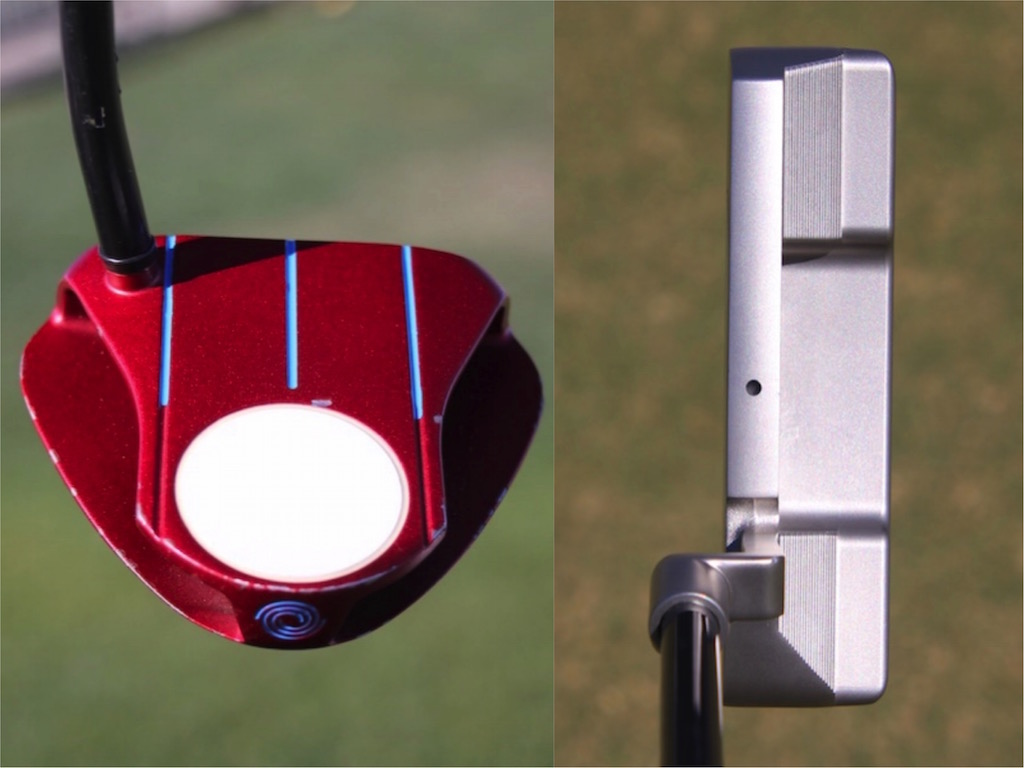
Four years ago, I wrote an article where I analyzed the putters that the top-50 players in the world were using, and the top-50 players in strokes gained: putting. I wanted to find out whether more mallet-style putters, or blade-style putters, were being used by the world’s best.
In 2018, I found that 44 percent of the top-50 players in the Official World Golf Rankings were using mallet style putters, and 56 percent of the top-50 in strokes gained: putting were using mallet putters.
Flash forward to 2022, and it would seem that more and more top golfers are switching into mallet putters – Scottie Scheffler, for example, just switched into a mallet putter after using a blade-style putter throughout his career.
What are the actual numbers, though? Are more top PGA Tour players really using mallet putters these days, or is the shift overblown?
I wanted to find out.
For my research, I simply went through the most recent GolfWRX WITB photos, and the most recent photos on Getty Images, to figure out what style putter each player in the Top-50 in the OWGR is using, as well as each Top-50 player in strokes gained: putting on the PGA Tour for the 2021-22 season.
Below are the results:
Top-50 in OWGR: Blade or Mallet?
Mallet putter users, 62 percent (31 out of 50)
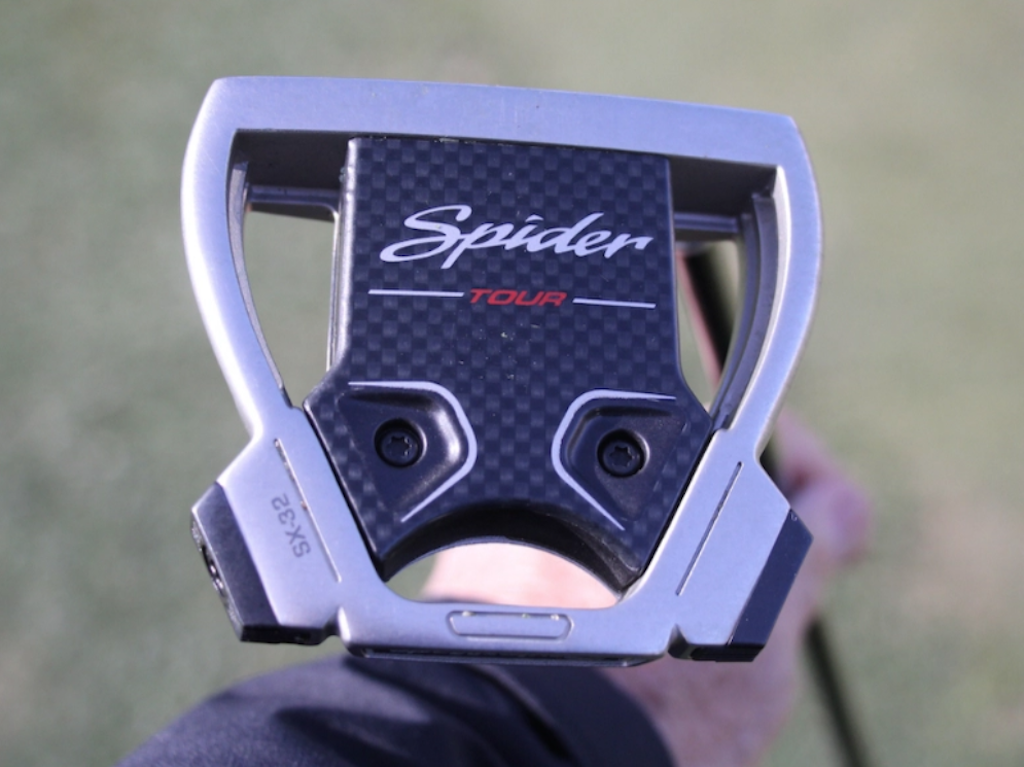
Rory McIlroy’s TaylorMade Spider Tour mallet putter
Rory McIlroy (No. 1: TaylorMade Spider Tour Hydroblast)
Scottie Scheffler (No. 2: Scotty Cameron T-5.5 Proto)
Patrick Cantlay (No. 4: Scotty Cameron T5 Proto)
Jon Rahm (N0. 5: Odyssey Rossie S White Hot OG)
Xander Schauffele (No. 6: Odyssey O-Works #7 CH Red)
Will Zalatoris (No. 7: Scotty Cameron Circle T Phantom X T-11 Proto)
Justin Thomas (No. 8: Scotty Cameron T5 Proto Tour-Only custom)
Viktor Hovland (No. 11: Ping PLD DS 72)
Sam Burns (No. 12: Odyssey O-Works 7S)
Billy Horschel (No. 16: Ping PLD Sigma 2 Tyne 4)
Cameron Young (No. 17: Scotty Cameron T5 prototype)
Max Homa (No. 18: Scotty Cameron Phantom X T5.5 Prototype)
Sungjae Im (No. 20: Scotty Cameron Flowback 5 Prototype)
Shane Lowry: (No. 21: Odyssey DFX 2-ball)
Abraham Ancer (No. 23: Odyssey White Hot No. 5 Stroke Lab)
Keegan Bradley (No. 25: Odyssey Versa Jailbird)
Sepp Straka (No. 27: Odyssey Tuttle Stroke Lab)
Tyrrell Hatton (No. 28: Ping Vault Oslo)
Kevin Kisner (No. 29: Odyssey 2-Ball 11)
Dustin Johnson (No. 30: TaylorMade Spider GT Black)
Corey Conners (No. 31: Ping PLD Prototype)
Tom Hoge (No. 32: TaylorMade Spider X Hydroblast)
K.H. Lee (No. 33: Odyssey Works Versa 2-ball)
Adam Scott (No. 34: L.A.B. Golf Mezz.1 prototype)
Aaron Wise (No. 36: TaylorMade Ghost)
Brian Harman (No. 37: TaylorMade OS CB)
Daniel Berger (No. 43: TaylorMade Spider X Hydroblast)
Jason Kokrak (No. 44: Bettinardi Studio Stock 38)
Harold Varner III (No. 46: Odyssey White Hot OG 7S)
Seamus Power (No. 48: Ping PLD3 Mallet)
Harris English (No. 49: Ping Scottsdale Hohum)
Blade putter users, 38 percent (19 out of 50)
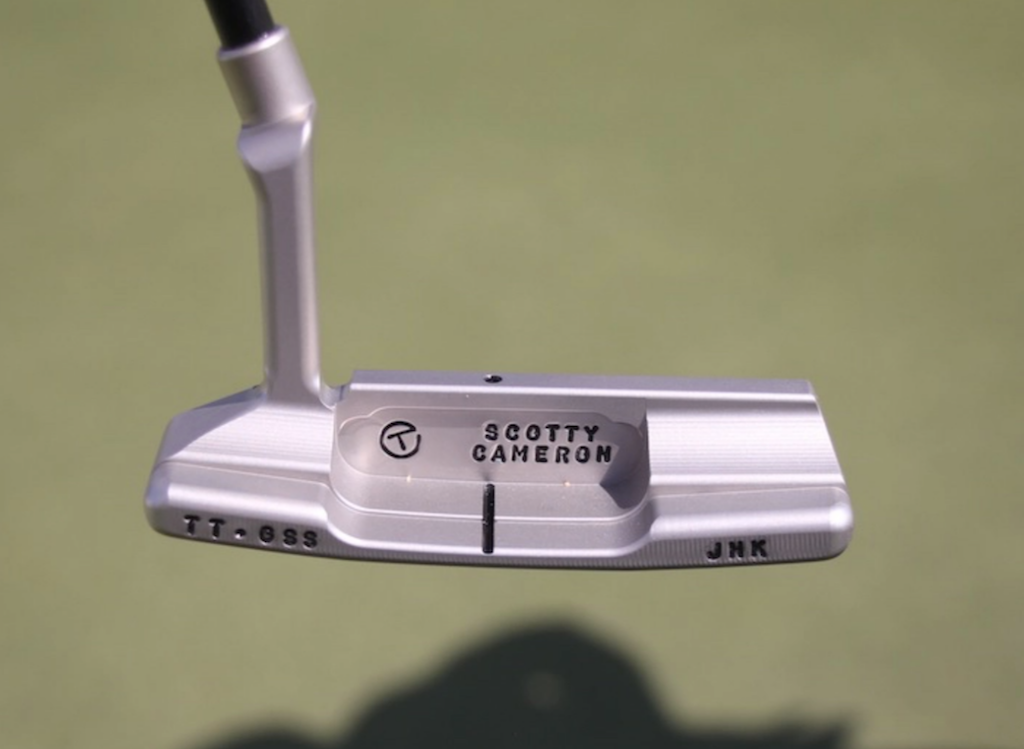
Tom Kim’s new custom Scotty Cameron blade-style putter
Cameron Smith (No. 3: Scotty Cameron 009M Prototype)
Collin Morikawa (No. 9: TaylorMade TP Soto)
Matt Fitzpatrick (No. 10: Bettinardi DASS Prototype)
Jordan Spieth (No. 13: Scotty Cameron 009 tour prototype)
Tony Finau (No. 14: Ping PLD Prototype)
Joohyung “Tom” Kim (No. 15: Scotty Cameron TourType GSS Prototype)
Hideki Matsuyama (No. 19: Scotty Cameron Newport 2 GSS)
Joaquin Niemann (No. 22: Prototype Ping PLD Anser)
Tommy Fleetwood (No. 24: TaylorMade TP Juno)
Ryan Fox (No. 26: Ping Anser 2D)
Thomas Pieters (No. 35: Scotty Cameron Squareback Select 2 Tour Only)
Talor Gooch (No. 38: Odyssey Tri-Hot Two)
Brooks Koepka (No. 39: Scotty Cameron Teryllium TNP2)
Kevin Na (No. 40: Odyssey Toulon Madison)
Kurt Kitayama (No. 41: Scotty Cameron Newport prototype)
Louis Oosthuizen (No. 42: Ping Vault 2.0 Voss)
Mito Pereira (No. 45: Ping Vault 2.0 Dale Anser Stealth)
Paul Casey (No. 47: Scotty Cameron 009M Prototype)
Alex Noren (No. 50: Odyssey O-Works 1W)
Top-50 in Strokes Gained: Putting
Mallet users: 70 percent (35 of 50 players)
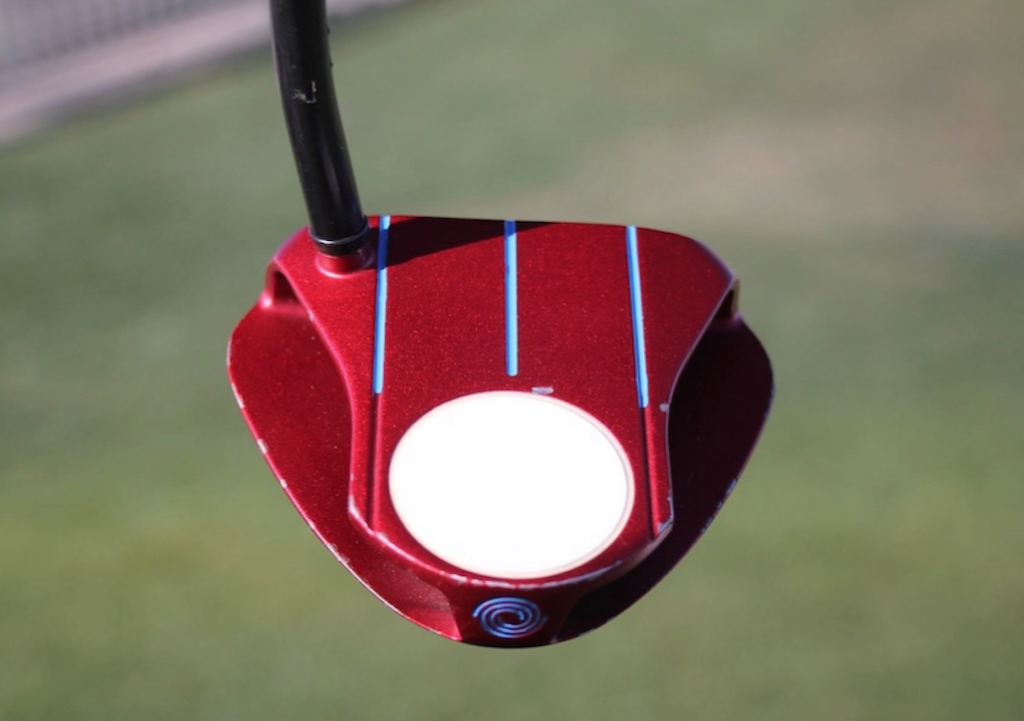
Kelly Kraft’s custom Odyssey Versa 1-Ball Red prototype mallet
Lucas Herbert (No. 1: TaylorMade Spider X Hydroblast)
Denny McCarthy (No. 2: Scotty Cameron GoLo N7)
Tyrrell Hatton (No. 4: Ping Vault Oslo)
Beau Hossler (No. 5: Odyssey 2-Ball Ten)
Christiaan Bezuidenhout (No. 6: Odyssey White Hot OG #7)
Kelly Kraft (No. 7: Odyssey Versa 1-ball Red Prototype)
Kevin Kisner (No. 9: Odyssey 2-ball 11)
Sam Burns (No. 10: Odyssey O-Works 7S)
Martin Trainer (No. 12: Scotty Cameron Circle T Prototype Phantom T12)
Chesson Hadley (No. 13: Odyssey White Hot OG 2-Ball)
Mackenzie Hughes (No. 14: Ping Scottsdale TR Piper C)
Rory McIlroy (No. 16: TaylorMade Spider Tour Hydroblast)
Ian Poulter (No. 17: Scotty Cameron T-11 Proto)
Justin Rose (No. 20: Axis1 Rose Prototype)
Billy Horschel (No. 21: Ping PLD Sigma 2 Tyne 4)
Matthew Wolff (No. 23: TaylorMade GT Notchback)
Adam Long (No. 24: Scotty Cameron T5 Proto)
Viktor Hovland (No. 25: Ping PLD DS 72)
Max Homa (No. 27: Scotty Cameron Phantom X T5.5 Prototype)
Patrick Cantlay (T28: Scotty Cameron T5 Proto)
Jon Rahm (T28: Odyssey Rossie S White Hot OG)
Wyndham Clark (No. 31: Scotty Cameron T5 Proto)
Xander Schauffele (No. 32: Odyssey O-Works #7 CH Red)
Vince Whaley (No. 33: Odyssey White Hot OG #7)
Rory Sabbatini (No. 34: Scotty Cameron Flowback Prototype)
Austin Cook (T35: Ping Sigma G Tyne)
Sungjae Im (No. 37: Scotty Cameron Flowback 5 Prototype)
Andrew Putnam (No. 38: Odyssey Stroke Lab Black Rossie)
Sepp Straka (No. 39: Odyssey Tuttle Stroke Lab)
Seamus Power (No. 40: Ping PLD3 Mallet)
J.T. Poston (T41: Scotty Cameron GoLo 5 Black Tour Prototype)
Adam Scott (T41: L.A.B. Golf Mezz.1 prototype)
Troy Merritt (No. 43: Yes! C-Groove Mollie Tour)
Jason Kokrak (T46: Bettinardi Studio Stock 38)
Mark Hubbard (No. 50: Odyssey Metal X Milled #9HT)
Blade users: 30 percent (15 of 50)
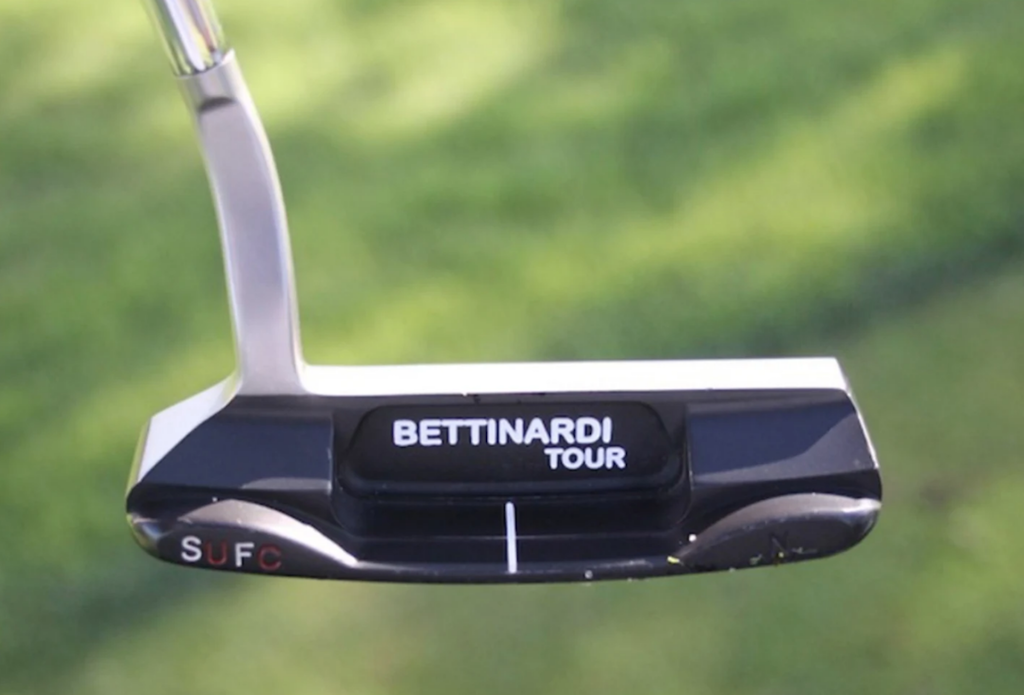
Matthew Fitzpatrick’s custom Bettinardi blade-style putter
Brendon Todd (No. 3: Sik Pro C-Series)
Cameron Smith (No. 8: Scotty Cameron 009M Prototype)
Matt Kuchar (No. 11: Bettinardi Tour Department SS28 DASS)
Marc Leishman (No. 15: Odyssey Versa #6)
Alex Noren (No. 18: Odyssey O-Works 1W)
Maverick McNealy (No. 19: Toulon Stanford MM Custom)
Matt Fitzpatrick (No. 22: Bettinardi DASS Prototype)
Tommy Fleetwood (No. 26: TaylorMade TP Juno)
Patrick Rodgers (No. 30: Odyssey Toulon San Diego)
Seung-Yul Noh (T35: Scotty Cameron Select Prototype)
Scott Stallings (No. 44: Scotty Cameron Newport 2.6 Prototype)
Brooks Koepka (No. 45: Scotty Cameron Teryllium TNP2)
Justin Lower (T46: PXG Prototype)
Richy Werenski (No. 48: Scotty Cameron Circle T Prototype)
Patrick Reed (No. 49: Odyssey White Hot Pro #3)
Conclusion
In 2018, 44 percent of the top-50 players in the Official World Golf Rankings were using mallet style putters, and 56 percent of the top-50 in strokes gained: putting were using mallet putters.
In 2022, 62 percent of the top-50 players in the OWGR use mallet style putters, and 70 percent of the top-50 in strokes gained: putting were using mallet style putters.
What do you think this means?
To me, it means that each golfer should try as many putters as possible – under the supervision of a professional fitter or local club professional – and find the best possible putter to fit their stroke style and preferences.
- LIKE188
- LEGIT43
- WOW15
- LOL7
- IDHT4
- FLOP3
- OB1
- SHANK14
Putter Reviews
REVIEW: Ping’s new PLD (Putting Lab Design) putters for 2022
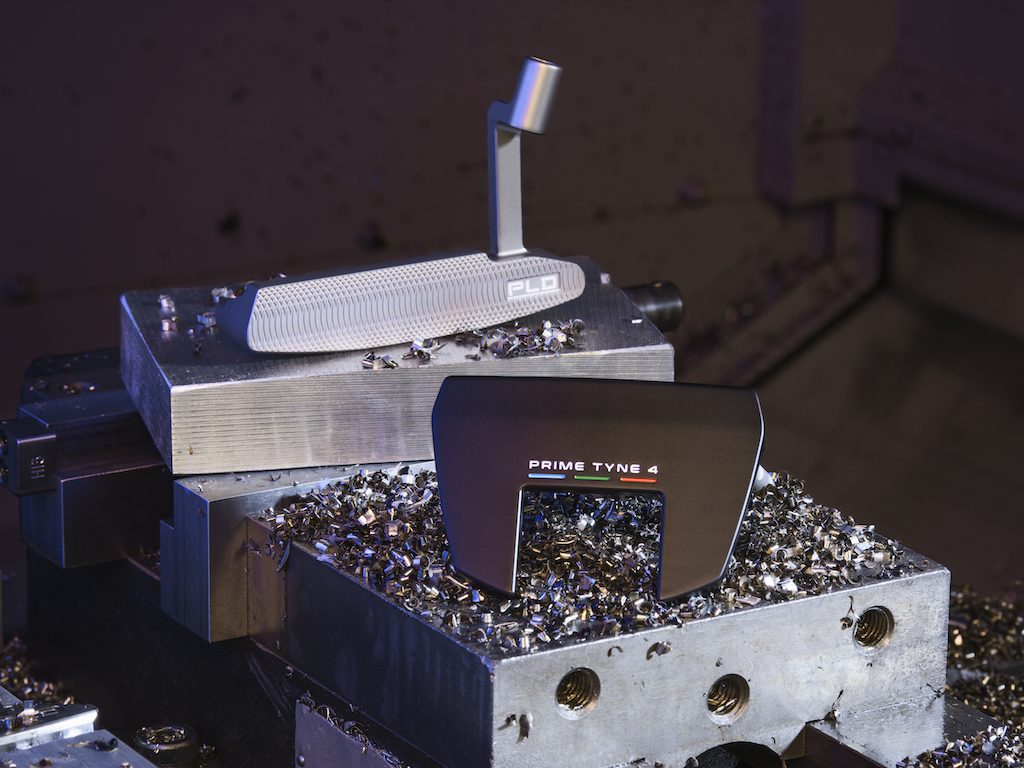
Not every golfer has access to custom-built golf putters like PGA Tour players do, but with Ping’s new PLD (Putting Lab Design) program, they can get pretty darn close.
Through the newly launched website, pingpld.com, golfers will have access to precision milled putters like the ones seen on Tour, and they can even customize their own putter with a Tour-level fitting experience either online or in person.
There’s three essential levels to the new PLD program: PLD Custom, PLD Limited and PLD Milled. Each of the levels comes with different putter options at differing price points.
“The PLD program allows us to bring golfers more of what we do best – design and build the highest-performing custom putters in the game,” said Ping President John K. Solheim, in a press release. “It offers nearly endless possibilities. Golfers can craft their own custom design through PLD Custom, choose the proven performance of a PLD Milled model or add to their putter collection by acquiring a PLD Limited. It gives golfers a chance to play what the pros play and own a piece of Ping history.”
“We established the PLD name several years ago as an extension of the PING Putting Lab,
where we’ve been fitting some of the top players in the world for more than 20 years,” said
Solheim. “Until now, access to the master fitters who deliver these custom putter experiences has been limited to the best players in the game. We can now bring golfers what they’ve been asking for either through a virtual or in-person experience.”
Below, we go further in-depth on each of the three options within the PLD program.
Ping PLD Milled
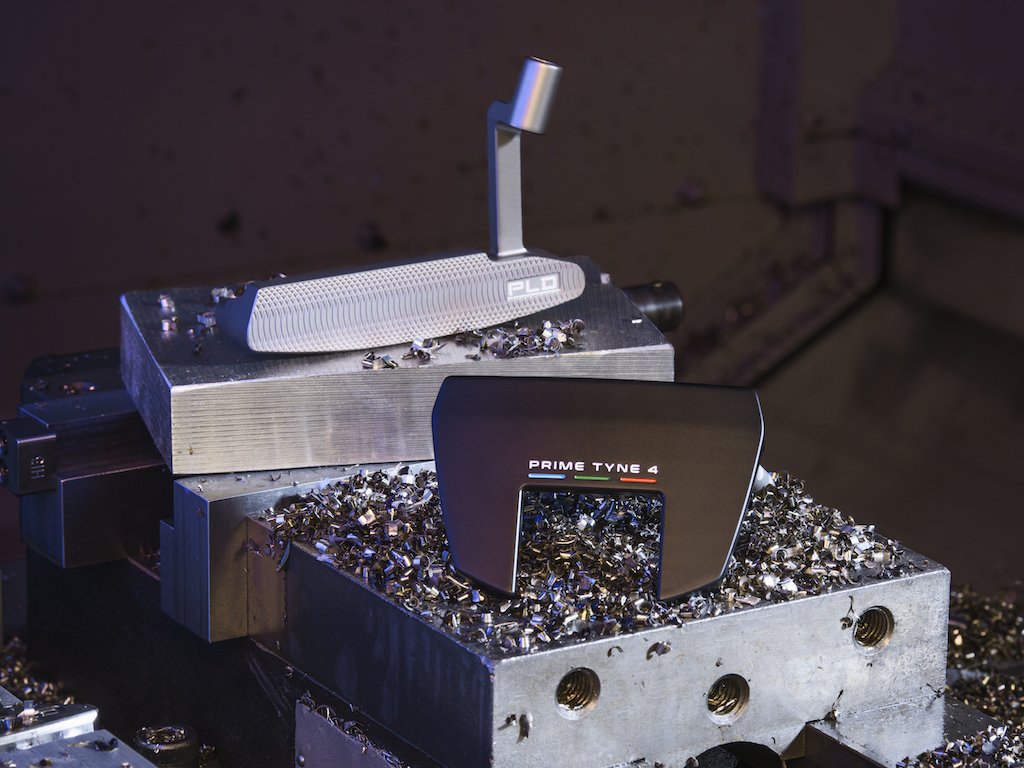
PGA Tour players such as Viktor Hovland, Tony Finau and Bubba Watson use Ping PLD precision milled putters, and now consumers will have access to those Tour-proven putters.
Each of the heads (Anser, Anser 2, DS72 and Prime Tyne 4) are machine milled from forged 303 stainless steel. Ping offers a breakdown of the specs for each available model, which will sell for $485 each:
Anser
Slight Arc
350g
Matte Black finish
Ping black graphite shaft
Lie Angle: 20° +/- 4°
Loft: 3° +3°/- 2°
Anser 2
Slight Arc
350g
Satin finish
Chrome stepless steel shaft
Lie Angle: 20° +/- 4°
Loft: 3° +3°/- 2°
DS72
Straight Stroke
365g
Satin finish
Chrome stepless steel shaft
Lie Angle: 20° +/- 2°
Loft: 3° +3°/- 2°
Prime Tyne 4
Aerospace grade, machined aluminum hosel
Strong Arc
360g
Matte Black finish
Matte-black stepless steel shaft
Lie Angle: 20° +/- 4°
Loft: 3° +3°/- 2°
“The PLD Milled is an exciting addition to our putter line,” said John K. Solheim. “We’ve
identified a couple of our most popular models from the past and some newer designs that have attracted a lot of attention in the last couple of years. We’ve given the new putters a very clean, premium look to emphasize the precision process they undergo before they are ready for play. As we collaborate on new designs with our engineers and tour staff through the PLD program, we’ll add new models to bring golfers the latest in tour-proven performance on the putting green.”
Ping PLD Limited
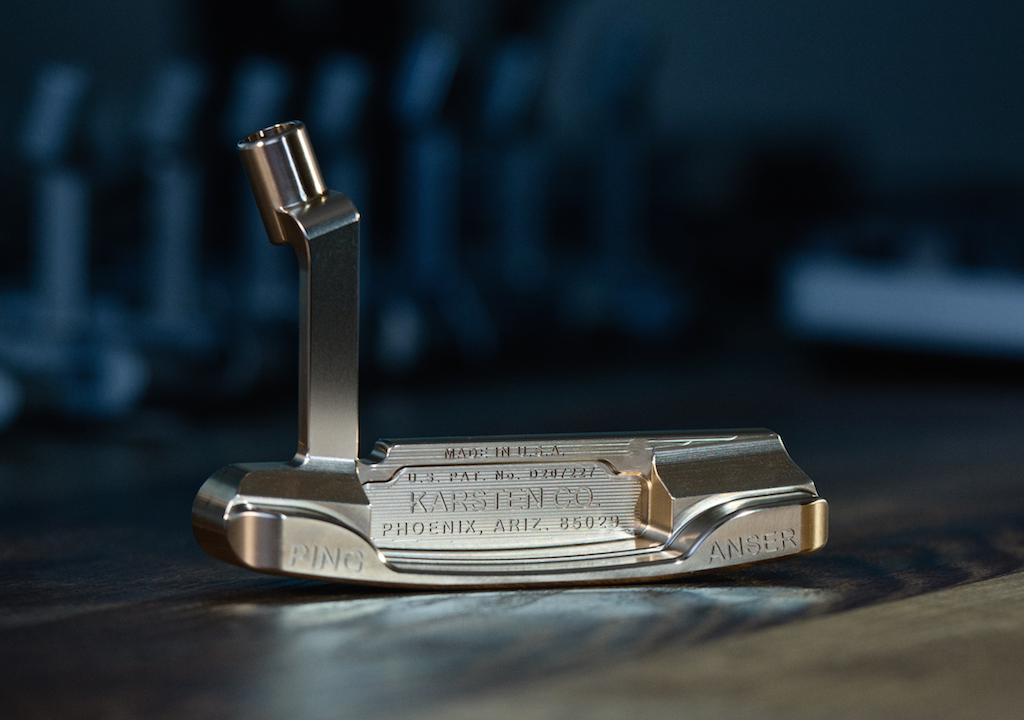
Ping’s PLD Limited will feature periodic limited-edition releases consisting of either putters that are played on Tour, or iconic designs from history. According to Ping, these putters are mostly targeted toward collectors, so they will have serialized numbers and will not be available for custom modifications.
For its first release ($790), Ping developed a 2022 version of the original Ping Anser, celebrating the 55th Anniversary of receiving the original Anser Patent on March 21, 1967.
“A lot of time has passed since the invention of the Anser putter,” said John A. Solheim, Ping’s Chairman & CEO and the youngest son of Karsten Solheim, who designed the original putter. “We think it’s important to remind the golf industry and some of the younger golfers that the iconic design they see with other brands’ name on it was created by Karsten in his garage in the mid-1960s. I was fortunate to be at his side building the first Ansers, and continued to do so for many years. It’s time Karsten gets the credit he deserves for inventing the Anser putter.”
Ping PLD Custom
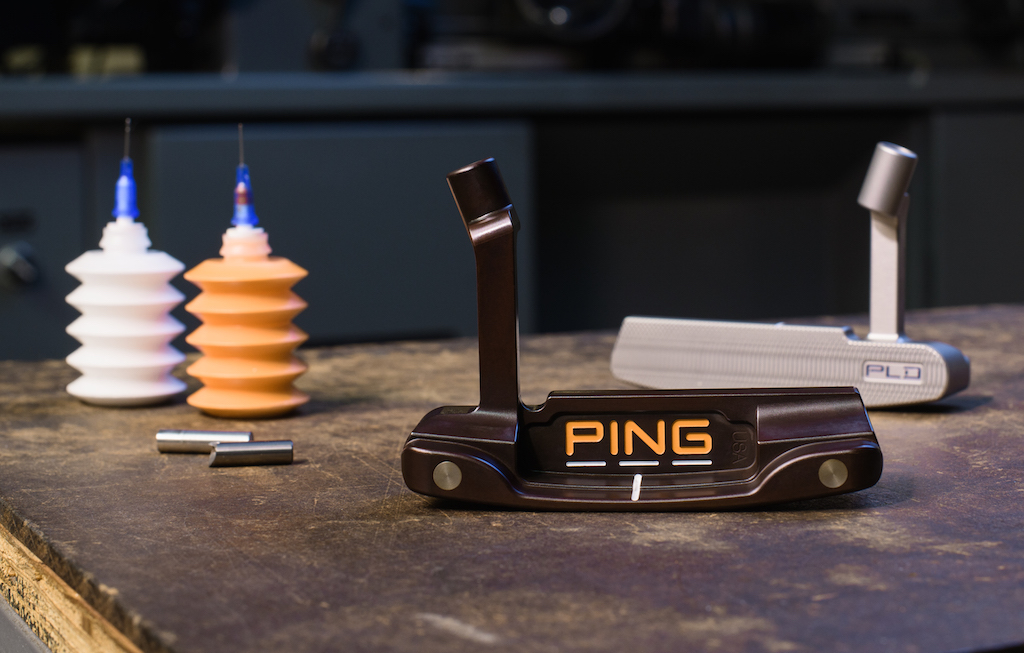
The highest level in the Ping PLD program feature the PLD Custom putters, where golfers can customize their own designs with either the help of a Ping Master fitter in person, or virtually through the PLD program online. To help golfers find their perfect putter, they will use the PLD iPing putting app, and a Ping Master fitter will analyze the player’s data to recommend a putter.
Then, golfers can fully customize the putter to their liking, with ability to change head model, Tungsten weighting, face milling, finish, alignment aids, stampings and paint fill. Ping’s Master Fitters will also help golfers get the correct length, lie angle and loft for their stroke and biometrics.
The putters themselves will sell for $1,290, and a $200 non-refundable payment is required to schedule and participate in a PLD Custom Fitting, whether it’s virtually or in person.
Personally, I received a Ping PLD Custom Fitting in-person at the company’s indoor facility in Phoenix, Arizona. After identifying my stroke flaws (of which there many) using Ping’s iPing putting app, I tried out a slew of different head options and we made head adjustments along the way to figure out what truly works. Here were my final specs:
Head model: Ping Anser
Finish: Patina
Weight: 350 grams
Alignment line/dot: None
Stamping: “T” on the hosel
Length: 35.5 inches
Shaft: Chrome Stepless Steel
Grip: PP58 Black Midsize
What blew me away most was how impactful length and lie angle can be on comfort at address and stroke pattern. Even minor changes felt drastic. Also, the depth of face milling can truly change both feel and sound; I never realized how much.
Another point of note: Switching up alignment lines obviously can affect aim, but for me, they also influenced my stroke itself due to the visual changes. I highly suggest going through a full putter fitting to determine what specifications you prefer for yourself.
Check out the photos below of the putter that was designed for me through my work with a Ping Master Fitter:
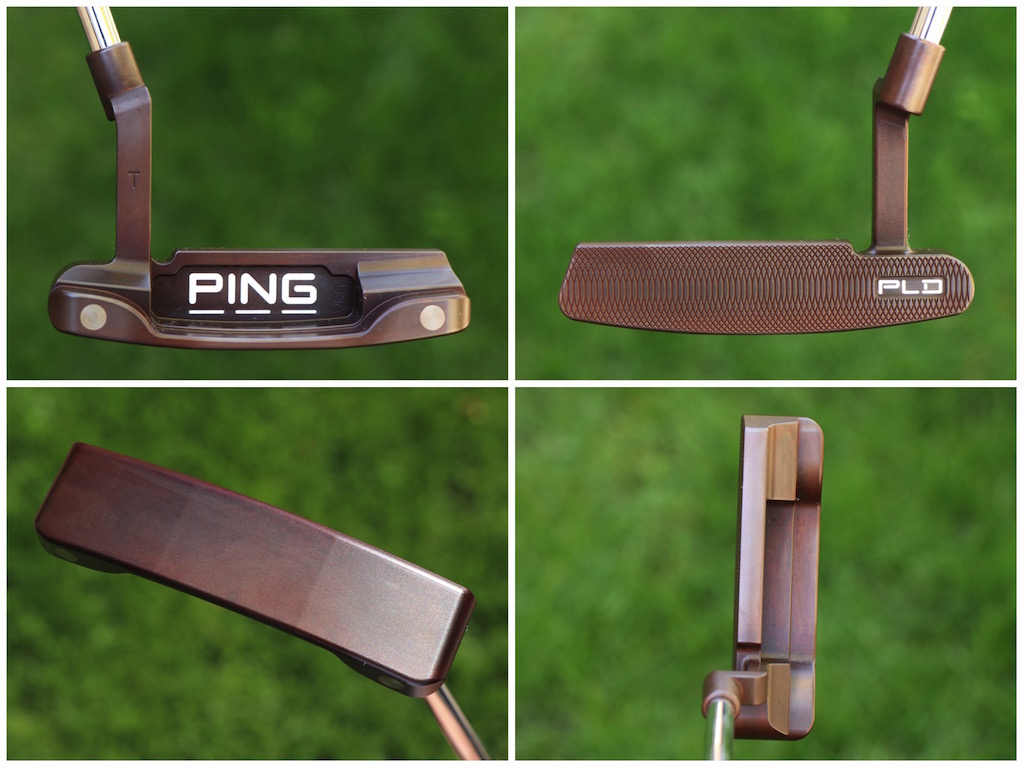
Ping PLD putters are available for pre-order today, and head over to Ping’s PLD website to book your own fitting here.
- LIKE126
- LEGIT12
- WOW15
- LOL4
- IDHT3
- FLOP1
- OB0
- SHANK10
Putter Reviews
WRX Spotlight Review: T Squared TS-713i Standard Series putter

Product: T Squared TS-713i Standard Series Putter
About T Squared: T Squared Putters is a small putter manufacturer just south of Buffalo, New York. The company was founded by Tony Tuber who created his first prototype putters, after hours, in his father’s machine shop. Since then Tony and his father have been creating high-quality putters in the same facility that creates high precision instruments for the medical field. They pride themselves on creating the highest quality, most precise putter they can offer. They offer a few different head shapes from small traditional blades to high MOI mallets and even a custom program to get exactly what you want.
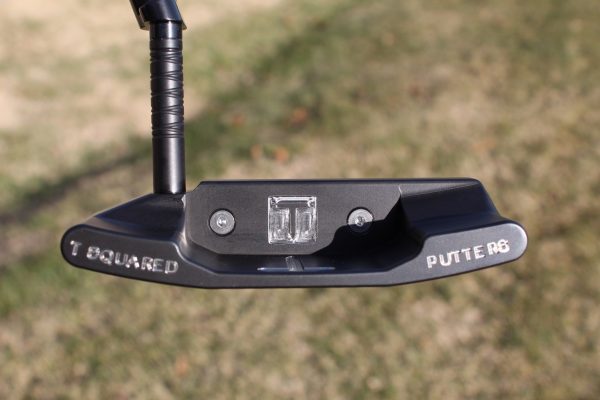
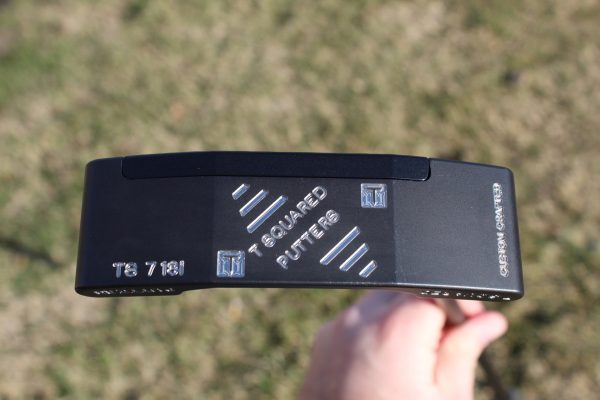
The Ts-713i Standard Series is based on the Ts-713, the first prototype that Tony created. It is a blade-style putter with a slightly longer flange and a unique face insert milled from 6061 aluminum. The body of the Ts713i is milled from a solid block of 303 stainless steel that is produced in the USA and has a Teflon backing between the body and face insert.
This Teflon backing helps give the putter a softer feel at impact and reduce any unwanted vibration. Details are what T Squared is all about and the neck of the putter shows off their milling expertise. The neck is similar to a plumbers neck, built with multiple pieces and offering some cool texture on the section bonded to the head. Another great detail is that all the silver markings on the putter are not filled with paint, they are milled into the head. T Squared finished the head in a sharp matte black and then milled all the markings on the putter for a unique, shiny silver look that really stands out. Ts-713i putters are built for customizing and have a ton of options that you can select if you would like to build something totally unique
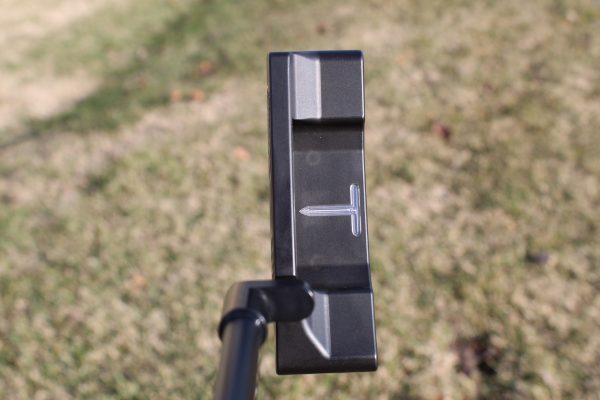
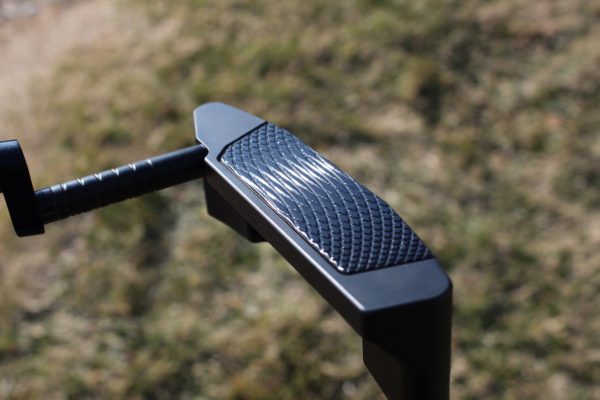
On the green, the T Squared TS-713i really performs fantastic. I found the feel at impact very solid without any unwanted vibration. The impact produces a muted click and soft feel that I wasn’t expecting from this aluminum insert and thin face. The deep milling and Teflon coated back to the insert really work together to produce a great, responsive feel that I enjoyed. Deep milling usually makes me a little worried because it can soften the putter too much and lose that feel we all demand.
The TS-713i has no issues and transmits impact feel back to your hands with ease. Mishits are a little louder and harsh, but nothing even close to unpleasant. I have used putters that don’t feel as good on perfectly struck shots as the TS-713i feels on mishit putts. Distance and accuracy on those mishit putts are not as drastic as you would expect with a blade putter. I often just missed the cup by small margins when I struck a putt on the toe or heel of the TS-713i. There aren’t too many blade putters that have shown this level of forgiveness on the green for me.
The “T” alignment aid on the flange of the putter is large and easy to use. Not only do you get a straight line from the face to the back edge for alignment, but the back of the “T” also helps you square the putter up to your target. The Pure grip is not my thing, and it would be great for T Squared to offer a few more options, but that is an easy fix and a very minor criticism.
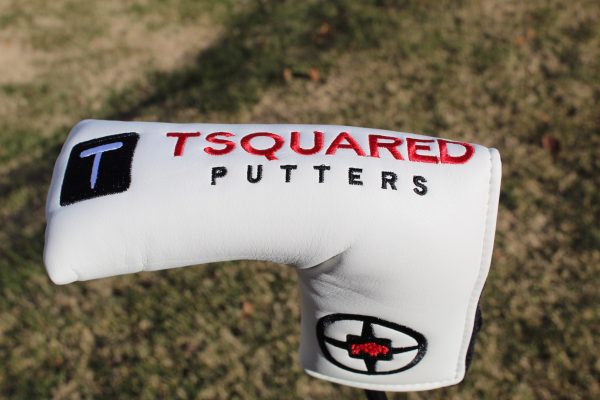
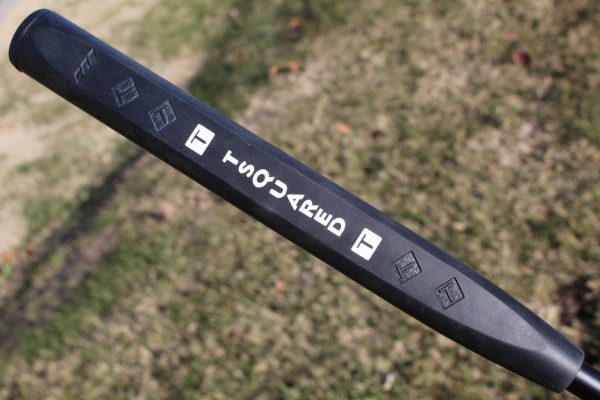
Overall, the T Squared TS-713i is a great putter from young Tony Tuber that exceeded my expectations. His attention to detail, precision milling, and take on a classic head shape offer golfers something different without sacrificing any performance. If you are looking for a great feeling putter that is made in the USA, you should take a look at T Squared and see what they can make for you.
- LIKE61
- LEGIT15
- WOW6
- LOL2
- IDHT2
- FLOP5
- OB0
- SHANK6
-

 19th Hole2 weeks ago
19th Hole2 weeks agoDave Portnoy places monstrous outright bet for the 2024 Masters
-

 19th Hole3 days ago
19th Hole3 days agoJustin Thomas on the equipment choice of Scottie Scheffler that he thinks is ‘weird’
-

 19th Hole2 weeks ago
19th Hole2 weeks agoTiger Woods arrives at 2024 Masters equipped with a putter that may surprise you
-

 19th Hole3 days ago
19th Hole3 days ago‘Absolutely crazy’ – Major champ lays into Patrick Cantlay over his decision on final hole of RBC Heritage
-

 19th Hole2 weeks ago
19th Hole2 weeks agoTwo star names reportedly blanked Jon Rahm all week at the Masters
-

 19th Hole1 week ago
19th Hole1 week agoReport: LIV Golf identifies latest star name they hope to sign to breakaway tour
-

 19th Hole1 week ago
19th Hole1 week agoNeal Shipley presser ends in awkward fashion after reporter claims Tiger handed him note on 8th fairway
-

 19th Hole1 week ago
19th Hole1 week agoBrandel Chamblee has ‘no doubt’ who started the McIlroy/LIV rumor and why
















Eric
Nov 20, 2008 at 10:47 pm
My head pro told me to try his new “Donna” putter from Yes! His was cut to 31″ so I really had to bend over it uncomfortably, BUT THIS THING FELT GREAT. Good enough that I went to the Yes! store and picked one up. It seemed to have great distance control, and isn’t that what’s important?
I’m gaming it tomorrow so we’ll see if it makes a permanent home in the bag. I am an arc putter so we’ll see how this heavy face-balanced putter works in that style..
Scott
Sep 19, 2008 at 6:59 pm
I absolutely concur with your review assessment! BEAUTIFUL fit and finish, a solid feel, and a putt that tracks like it’s on rails!
I also noticed that the ball seems to roll farther on a similar stroke to my Callaway Tour Blue 3, which takes some getting used to, but the incredible feel and tracking provided by this putter makes it my NEW favorite!
Gabe
Aug 13, 2008 at 5:58 pm
Just bought this putter and I love it! Seriously, try any of the Yes! model putters and you will see a difference immediately. Great company.